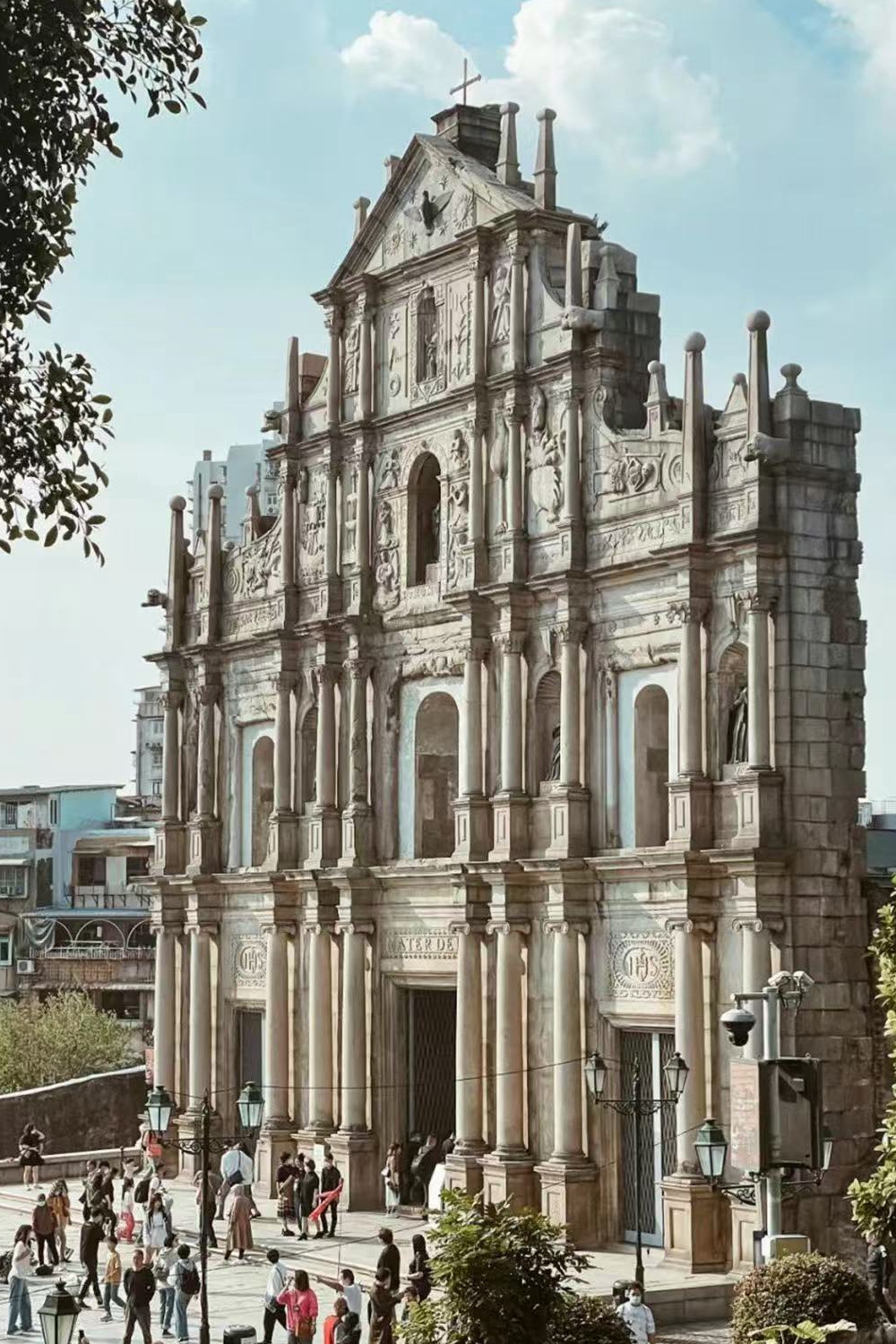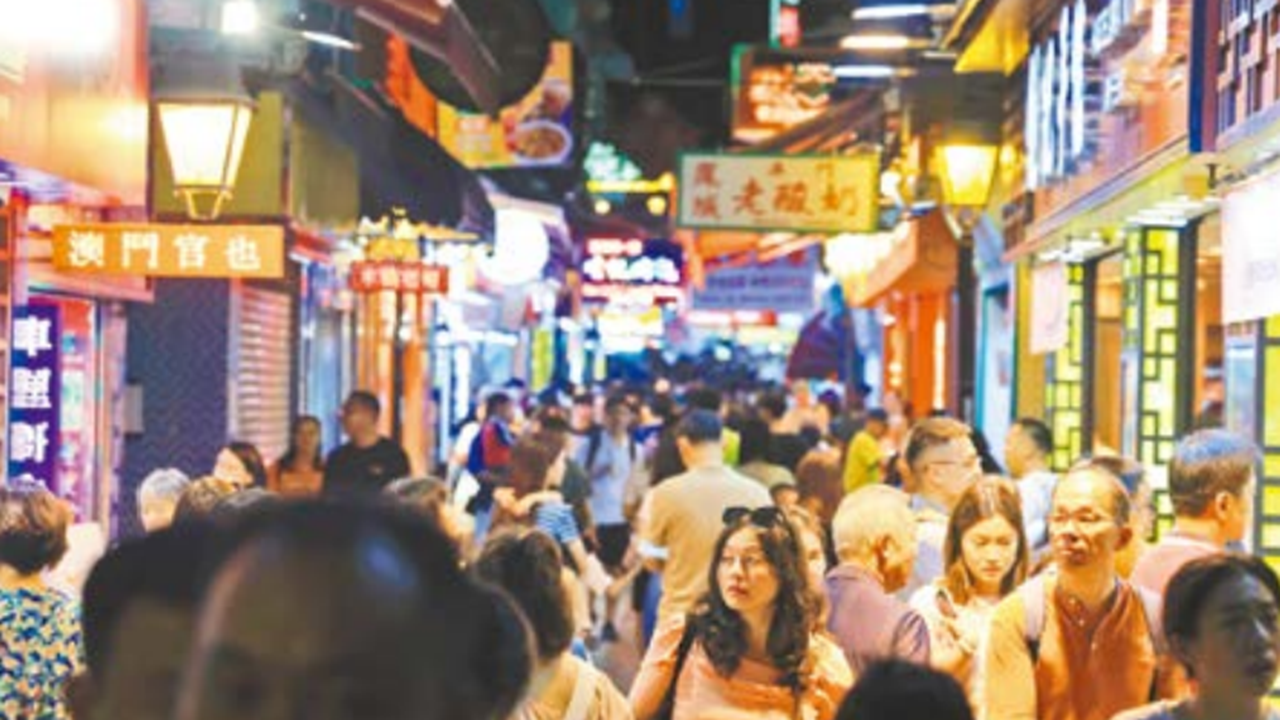Beyond the casinos: Discover the hidden gems of Macao
Writer: Wei Jie | Editor: Lin Qiuying | From: Shenzhen Daily | Updated: 2024-11-11
To many, Macao is synonymous with gambling, and is regarded, along with Las Vegas in the United States, as one of the world’s leading gambling destinations. While this perception holds some truth —given that this special administrative region of China is home to many of the world’s major casinos —Macao has a lot more to offer tourists beyond the well-known Ruins of St. Paul’s.
Here visitors will find ancient Chinese-style houses and temples dating back to the Ming and Qing dynasties, as well as diverse Western architecture including numerous churches. There are also constructions that blend Oriental and Western cultural and architectural elements, highlighting the city’s unique charm and character.
Macao’s proximity to Shenzhen, just an hour by ferry, makes it an ideal weekend getaway for Shenzheners. Macao mainly consists of two parts —the Macao Peninsula and Cotai —which are connected by bridges.
Casinos and luxury hotels
Even if you are not into gambling at all, the casinos and luxury hotels in Macao are still worth a couple of hours to explore their opulent interiors.
After arriving at the Taipa Ferry Terminal, hop on a shuttle bus free of charge to The Venetian Macao, renowned for its incredible grandeur. The hotel boasts a vast indoor space featuring Venetian-style bridges, small canals and cobblestone streets, all under a painted sky ceiling. You can easily walk to The Parisian Macao from The Venetian through a promenade. With its classic French interior decor, The Parisian is famous for its replica the Eiffel Tower, which lights up beautifully at night.
 The replica of the Eiffel Tower at The Parisian Macao. Photos by China News Service
The replica of the Eiffel Tower at The Parisian Macao. Photos by China News Service
Other iconic hotels, such as Grand Lisboa Macao and Wynn Palace, also offer eye-opening experiences simply by visiting them, especially after dark when their exteriors are illuminated.
Although Macao is tiny enough to explore in a day, it’s highly recommended to stay overnight in this former Portuguese colony, which was returned to China in December 1999, as the charm of Macao truly comes alive at night.
Ruins of St. Paul’s 大三巴
Unarguably one of the most iconic landmarks of Macao, the Ruins of St. Paul’s is a must-visit place, without which you can’t truly say you’ve been to Macao.

The Ruins of St. Paul’s are a must-visit place in Macao.
The ruins are the remnants of the facade of a Catholic church, which was built by the Jesuits between 1602 and 1637. Alongside the church stood St. Paul’s College, the first Western-style university in the Far East. The constructions were partially destroyed by a devastating fire in 1835.
The ruins were excavated and restored by the local government from 1990 to 1995, and now house an on-site museum that is open to the public. The Ruins of the St. Paul’s embody the Italian Baroque style, featuring carvings with Eastern characteristics. Built with granite, the structure measures 23 meters wide and 25.5 meters high, accessed by 68 stone steps. The arch is adorned with carvings of Jesuit saints, statues of the Virgin Mary, angel reliefs, and a shrine to Jesus, as well as Eastern elements such as stone lions, Chinese characters, and Japanese chrysanthemum carvings, holding significant cultural and artistic value.
In 2005, they were officially listed as part of the Historic Centre of Macao, a UNESCO World Heritage Site.
Fortaleza do Monte 大炮台
Fortaleza do Monte, an ancient monte forte in Macao, began construction in 1617 and was completed in 1926. Even before its completion, the battery played a crucial role in defending Macao in 1622, firing on the Dutch troops during their attack on the city. However, all the buildings on the battery were destroyed by a fire in 1835.
The Fortaleza do Monte remained a military restricted area until 1965 when the original barracks were transformed into a meteorological station. One year later, the meteorological station was relocated, and the area was opened to the public as a tourism attraction within the Historic Center of Macao.
In September 1996, the government converted the former site of the meteorological station into the Macao Museum, which was completed and opened to the public in April 1998.
St. Dominic’s Church 玫瑰堂
The St. Dominic’s Church was established in 1587 by three Spanish Dominican priests who arrived in Macao from Acapulco, Mexico. The first Portuguese-language newspaper in China —A Abelha da China —was published at St. Dominic’s on Sept. 12, 1822. The church was closed in 1834, and turned into barracks, a stable and an office for public works. In 1929, the church reopened and was given numerous works of sacred art from other religious orders dissolved in Portugal. St. Dominic’s Church underwent renovations in 1997, and a museum was added alongside the church.
A-Ma Temple 妈祖阁
A-Ma Temple is the oldest and most famous Taoist temple in Macao. Built in 1488 and located close to the coast, it is dedicated to Mazu, the goddess of sailors and fishermen. The temple is one of the sites comprising the Historic Center of Macao, which is listed as a UNESCO World Heritage Site.
A-Ma Temple is still a popular site with locals, especially during the Chinese New Year, or Spring Festival, and on the 23rdday of the third month in the lunar calendar, which marks the birthday of the goddess, attracting large crowds to the temple to offer incense and seek blessings.
Other attractions
Other notable places such as Taipa Houses Museum, Chapel of St. Francis Xavier, and Rua do Cunha are also worth exploring for a deeper understanding of the special administrative region.

Macao is an ideal weekend getaway for Shenzheners.
Travel tips:
How to get to Macao?
The ferry is the best option for traveling from Shenzhen to Macao. It takes approximately 70 minutes from Shekou Ferry Terminal directly to Macao’s Taipa Ferry Terminal, costing 230 yuan per person. Alternatively, you can take a ferry from Shekou to Jiuzhou Port in Zhuhai, then catch bus No. 99 to the Gongbei Checkpoint to cross the border into Macao. The route takes more than 100 minutes, but at nearly half the cost of the direct ferry to Taipa.
Currencies
In Macao, Hong Kong dollars, yuan and local currency (MOP) are all accepted, fixed at an exchange rate of 1:1:1 of the three currencies. It is advisable to carry about 500 MOP in cash per person for a day’s trip.
Events
The 71stMacao Grand Prix will be held from Nov. 14 to 17, featuring top racers from around the world competing in this prestigious car racing event. This year, the Fédération Internationale de l'Automobile (FIA) makes a change to the Formula 3 car model used at the Macao event, which is regarded as more suitable for racing at the Guia Circuit.

A scene from the Macao Grand Prix in 2023.
Concurrently, from Nov. 15 to Dec. 1, the 24thMacao Food Festival will take place to offer a wide variety of food and delicacies from various countries to tantalize your taste buds.